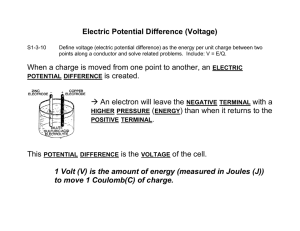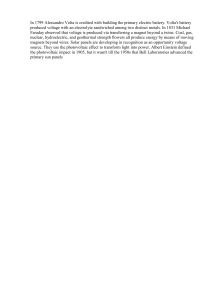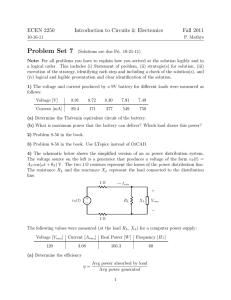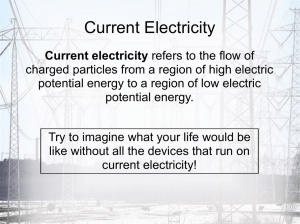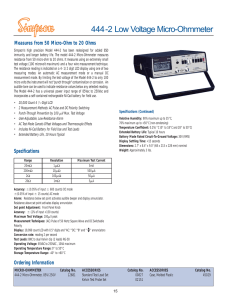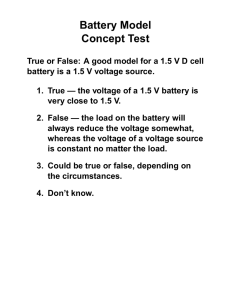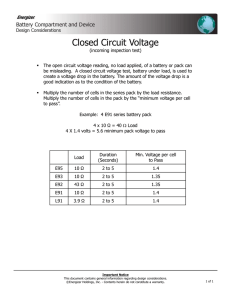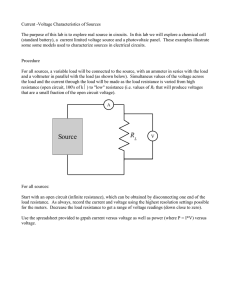Voltage in Electrical Systems
advertisement
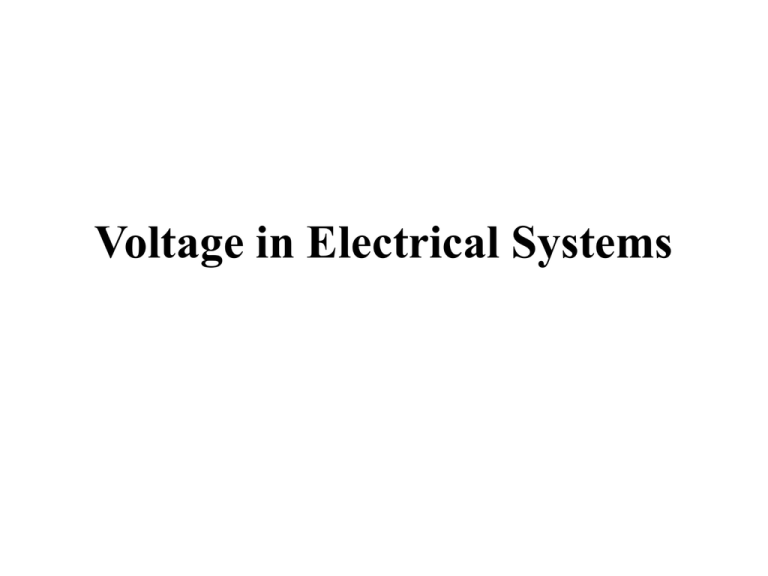
Voltage in Electrical Systems I. Universal Forces A. Gravity 1. Newton’s universal law of gravitation 2. Fg = G (m1m2/d2) 3. G = 6.67 X 10-11 (universal gravitational constant) 4. Example 1.11, p. 49 N· m2 kg2 B. Electrical Force 1. Charge causes force a. positive b. negative 2. Principle of conservation of charge (p. 50) 3. Coulomb’s law (p. 51) 4. FE = K (q1q2/d2) 5. Charge is in Coulombs (C) + q1 FE _ FE _ FE q1 q2 FE _ q2 6. K = 9.0 X 109 N∙m2/C2 7. Protons and Electrons have a charge of 1.6 x 10-19 C 8. Example 1.12, p. 52 II. Gravitational and Electric Fields A. Act over a distance B. Field—imaginary construction to help understand and predict how forces are transmitted. (g = Fg/m) C. Field is a vector 1. direction of g (gravitational field) is the direction of the force on the test mass 2. g does not depend on the size of the test mass D. E = FE/q 1. direction of E is the direction of the force on the positive test charge 2. E does not depend on the size of the test charge. E. Field lines: - III. Electric Potential A. Electric potential difference—whether a charge will accelerate when released— electric potential or voltage B. Unit of potential difference-Volt C. ΔVAB = E x d D. Flow of charge—current E. pump = battery IV. Components of Electrical Systems (for a complete circuit) A. Source—battery or generator B. Conductors—metal wire or metal connections C. Load—appliance or machine D. Control elements—switches, volume controls E. P. 56 V. Kinds of Current A. Direct Current (DC) 1. cell—primary, secondary 2. battery 3. connecting cells in series will add voltage 4. electrodes a. positive—anode b. negative—cathode 5. schematic diagram (see p. 60) B. Alternating Current (AC) 1. voltage source reverses terminals many times per second 2. frequency ( f)— cycling rate 3. frequency is measured in cycles per second—hertz



